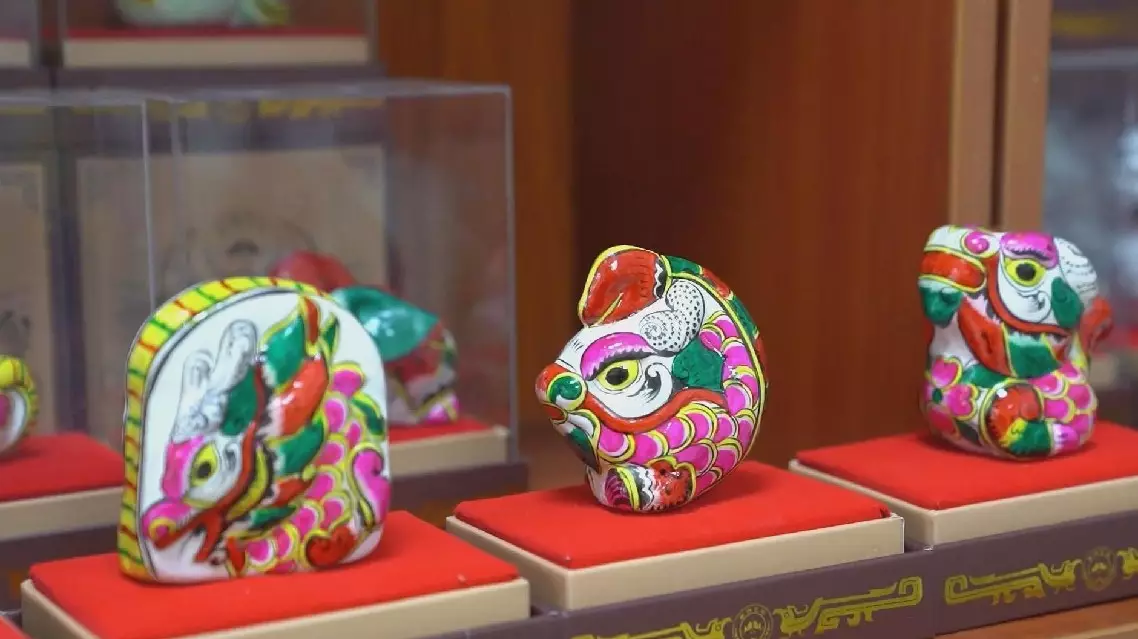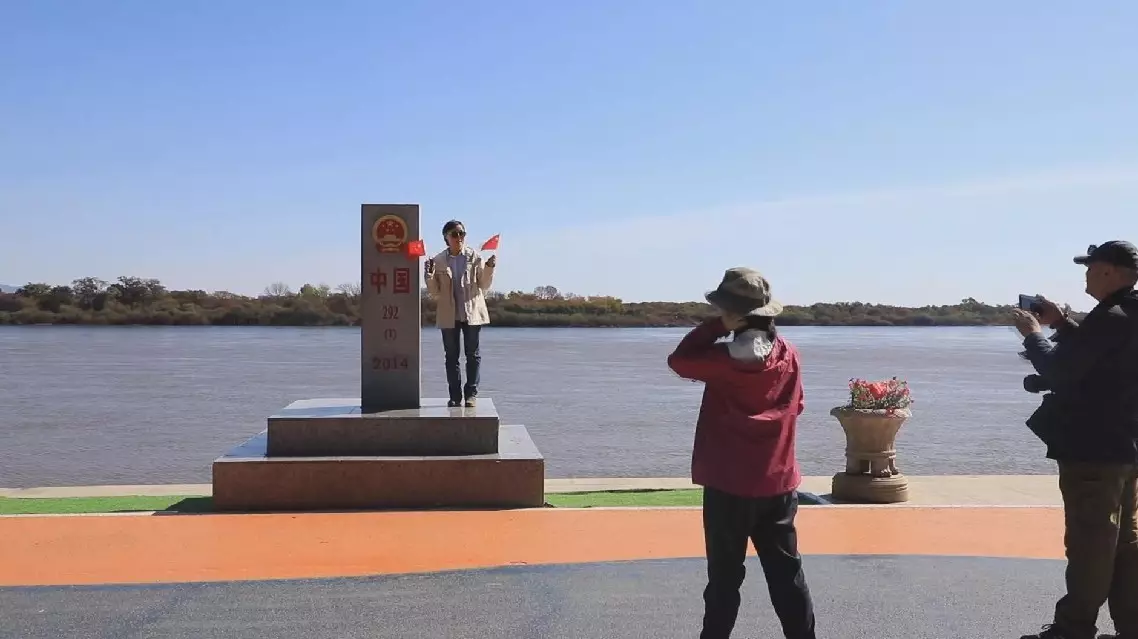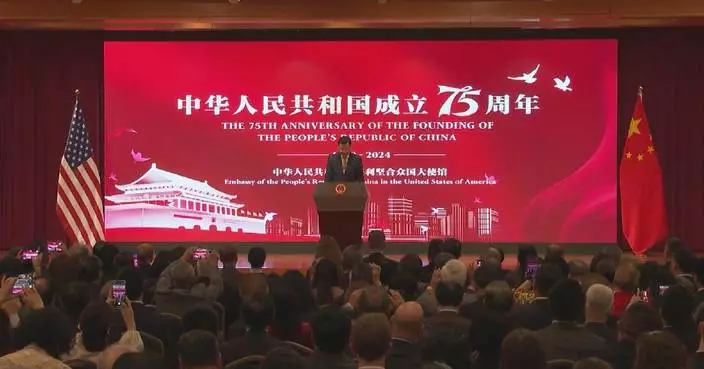Chinese traditional clap sculpture has become stylish by adding modern luster as inheritors of intangible cultural heritage in northwest China's Shaanxi Province has enlivened the age-old Fengxiang clay sculpture by infusing modern techniques and designs to give it a trendy facelift.
The time-honored Fengxiang clay sculpture was originated during the pre-Qin period (pre-221 B.C.) and thrived in the Ming Dynasty (1368-1644), which was included in a national protection project for intangible cultural heritage in 2006 and requires fine technique especially in drawing lines.
"When painting Fengxiang clay sculptures, one must be light with the brush, avoiding harsh strokes that might cause intersecting or overlapping lines. This is referred to as 'avoidance of intersection'," said Hu Xinming, an inheritor at national level of the national intangible cultural heritage Fengxiang clay sculpture.
Fengxiang clay sculptures are mainly adorned with auspicious motifs such as flowers, birds, fish, insects, divine birds, and mythical beasts. They feature vibrant and festive colors, exaggerated forms, and are crafted using the local special clay. The production process involves over 10 meticulous steps, including modeling, casting the clay mold, outlining, and painting.
Born in 1994, Hu Jinwei was influenced by his father Hu Xinming, and immersed himself since childhood in the vibrant, festive and naive forms of Fengxiang clay sculptures. He showed great fancy and passion for the art of clay sculpture.
He chose to study a major related to product appearance design at university. After graduation, he returned to his hometown and began to apply his knowledge and skills to design clay sculptures and cultural products that appeal to the tastes of young people.
Han Jianbin, the district-level inheritor of the national intangible cultural heritage Fengxiang clay sculpture, also echoed with Hu Jinwei's idea.
"The current characteristics of the clay sculptures I make mainly emphasize a China-chic features like cuteness and cartoonish roundness. These styles are primarily favored by young people. In the future, we plan to incorporate the traditional Fengxiang clay sculpture style, known for its vibrant reds and greens, to create fully integrated artworks," said Han.

Chinese traditional clay sculpture becomes stylish by adding modern luster
Visiting boundary markers seems to have become a new trend in holiday-making on frontier regions in Northeast China's Heilongjiang Province neighboring Russia so far in the week-long National Day holiday that started on October 1.
At the border gateways and boundary monuments on the 2,981-kilometer frontier in Heilongjiang, tourists from all over the country are seen stopping to have photos taken with the boundary monuments or markers, with some listening to stories told by frontier police officers about past events associated with the frontier regions.
In China, the National Day holiday is a peak travel and tourism season.
Lying in the easternmost point of China is the Wusu Town Dongji Square in Fuyuan City of Heilongjiang Province. Next to the huge sculpture bearing the Chinese character of "East" in the square, the five-star Chinese national flag is fluttering in the wind. Just beside the national flag is a boundary monument, which has become an attraction to visitors.
Many of the visitors say that having a picture taken with the boundary monument on the occasion of the National Day holiday would make them feel honored about happy powerful their motherland is.
Li Xin, a police officer with the Wusu Town Border Police Station on duty at the Dongji Square, said he has felt the enthusiasm of visitors.
Li said that the number of tourists visiting the Doingji Square so far in the National Day holiday has doubled compared to the same period of last year.
In Mohe, the northernmost city in China which is more than 2,000 kilometers away from Dongji, visitors are also seen flocking to the Beiji (North Pole) Village to have pictures taken with the local boundary marker.
Zhang Jiale, a police officer with the Arctic Border Police Station in Mohe, expressed the same feeling as Li Xin.
In Suifenhe, another frontier city in Heilongjiang, tourists also seen enthusiastically flocking to the boundary monument beside the third-generation border gateway to have pictures taken with it. The Suifenhe Gateway Scenic Spot is located at the zero point of Suifenhe Highway Port G10 Suiman Expressway, the largest land port to Russia in Heilongjiang Province. It is the only longitudinal cross-border scenic spot in China and the only one that integrates three generations of border gateways in China's gateway scenic spots.
In this scenic spot, tourists frequently ask Wang Jiaxing, a police officer with the Suifenhe Entry-Exit Border Checkpoint on duty, to help take photos or ask about how to make a tourist travel to the neighboring country.
Ke Zunlei, a tourist from Shanghai, visited the site with his wife and young daughter.
"Standing at a frontier region of my own country, I feel that this place is quite sacred," Ke said.
In Hutou Township of Jixi City in the province, the boundary marker "292-1-2014," which marks the starting point of the Wusuli River between China and Russia, also attracts many visitors to make a visit and take photos.

Visiting boundary markers becomes new trend in China's National Day holiday travel










